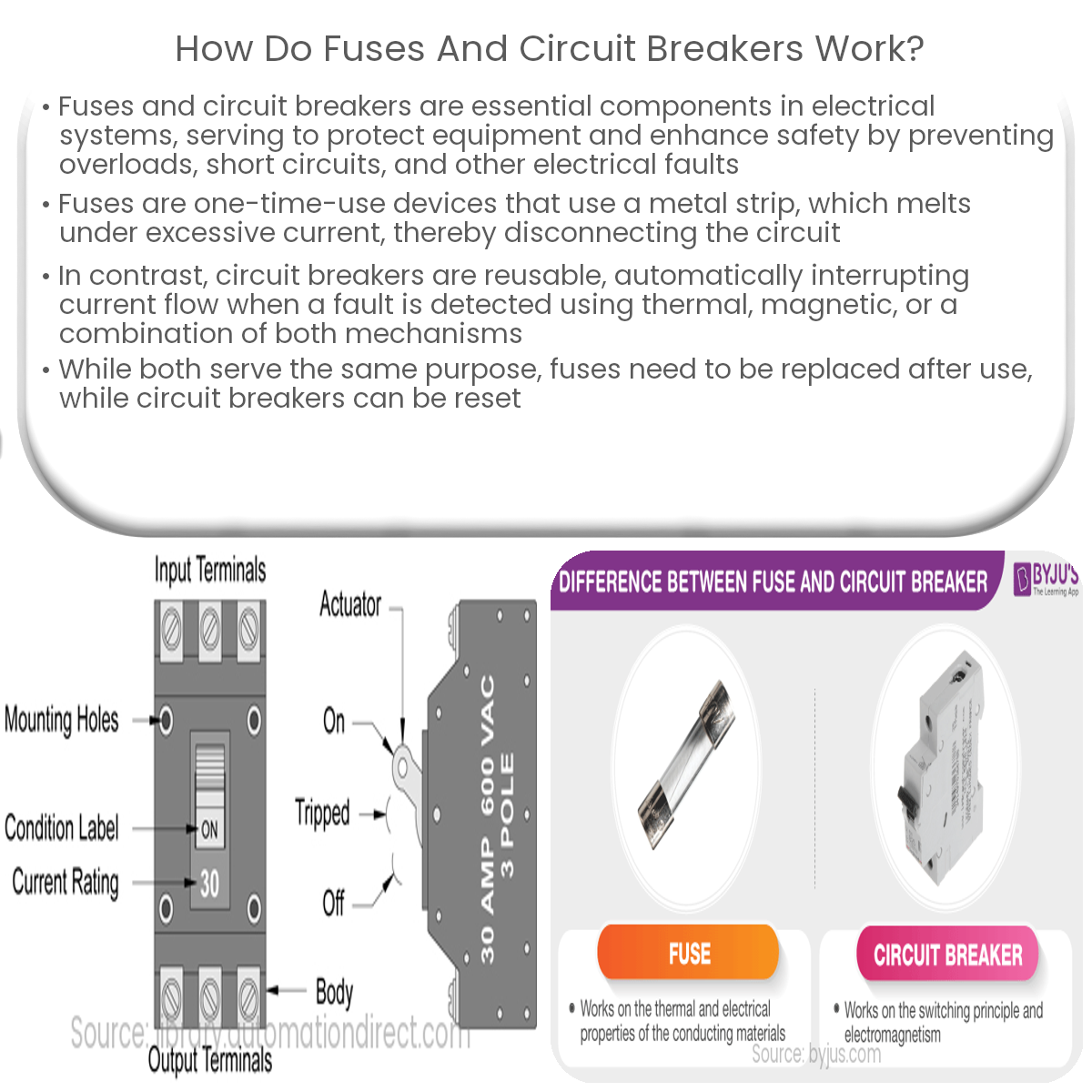Fuses and circuit breakers protect electrical systems by interrupting current flow in case of overloads or short circuits, ensuring safety and preventing damage.
How Fuses and Circuit Breakers Work
Fuses and circuit breakers are essential components in electrical systems, designed to protect equipment and ensure safety by preventing overloads, short circuits, and other electrical faults. Both devices work by interrupting the flow of electrical current when a fault is detected, but they differ in their operating principles and reusability.
Fuses
A fuse is a simple, one-time-use device containing a thin metal wire or strip that melts when excessive current flows through it. The melting of the fuse wire disconnects the circuit and stops the flow of electricity, protecting the equipment from damage and preventing fires.
Fuses are available in various ratings, corresponding to the maximum current they can handle before melting. To ensure proper protection, it is crucial to select the correct fuse rating for a specific application. Once a fuse has melted due to an overload or short circuit, it must be replaced with a new one of the same rating.
Circuit Breakers
Circuit breakers, on the other hand, are reusable devices that automatically interrupt the flow of current when a fault is detected. They employ either thermal, magnetic, or a combination of thermal-magnetic mechanisms to sense and respond to abnormal current conditions.
- Thermal Circuit Breakers: These breakers use a bimetallic strip that bends when heated due to excessive current. The bending motion triggers a mechanical latch, opening the circuit and stopping the flow of electricity.
- Magnetic Circuit Breakers: These breakers rely on the magnetic field generated by the current flowing through a coil. When the current exceeds a certain threshold, the magnetic field becomes strong enough to attract a movable contact, opening the circuit.
- Thermal-Magnetic Circuit Breakers: These breakers combine both thermal and magnetic mechanisms, offering protection against both overloads and short circuits.
Unlike fuses, circuit breakers can be reset and reused after the fault has been resolved. To restore the flow of electricity, the circuit breaker’s switch must be manually reset to the closed position.
Conclusion
Fuses and circuit breakers play a crucial role in maintaining electrical safety by preventing excessive current from causing damage to equipment and posing a fire risk. While both devices serve the same purpose, they differ in their operation and reusability, with fuses being a one-time-use solution and circuit breakers offering resettable protection.


